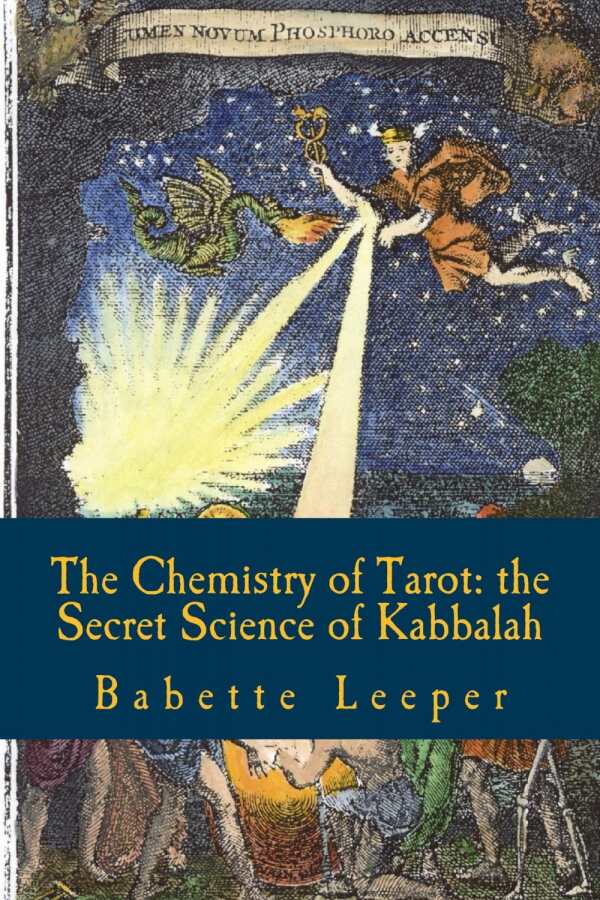The Chemistry of Tarot
The Secret Science of Kabbalah
The Chemistry of Tarot is a curious, arcane volume of spiritual exploration that issues seductive calls.
Babette Leeper condenses a lifetime of learning and meditation on the Tarot into a reference work that connects the periodic table to the origins of the universe. The Chemistry of Tarot is a fascinating, if esoteric project.
Though Leeper’s work is unapologetically “not a Tarot book for beginners,” she begins it with a personal story that invites sympathy from a broad range of readers, particularly any who have ever toyed with epiphanies. Her writing here is crisp and evocative.
The transition to the body of the work is swift, with Leeper soon explaining how she reached the conclusion that the elements of existence have identifiable connections within the Tarot. The bodies of opening chapters include annotated bibliographies of works necessary to elucidate mystical concepts. Readers may find themselves grateful for these leads on clarifying, or foundational, works, though their inclusion somewhat inhibits the fluidity of the text.
The bulk of the work, however, treats the elements on a case-by-case basis, connecting them anatomically to corresponding Tarot cards and particularly with kabbalistic concepts. Layered connections are not always easy to follow, but the dots that Leeper seeks to join are explained in fascinating terms: the hydrogen is tied to the Tarot’s magician, and lithium is made to work in neat concert with the Empress card.
Some lines are less perfectly drawn, though Leeper excuses her rare liberties with order by reminding readers that the periodic table is fallibly arranged. Illustrations are helpful in clarifying her concepts, though many are hard to make out: black-and-white renderings make photographs hard to see, and the periodic tables aren’t sized for easy use.
Leeper’s enthusiasm for the work is infectious, and her conviction that these connections provide a scientific foundation for Tarot is appealing. The author’s passion remains a compelling ingredient for seeking readers throughout.
The dominance of kabbalistic concepts dissipates and Leeper is forced in more creative and integrative directions. Some may be intrigued by her arrangement of the elements into a Tarot-friendly periodic table, if this also leaves more room for challenging drawn associations.
Internal calls for experts to flesh out the particulars of the work are a peculiar addition, though they speak to Leeper’s openness, and affirm her proclaimed desire to treat the work as an evolving one. Such humility poises the book for meaningful engagement among Tarot-centered mystical communities.
The Chemistry of Tarot is a curious, arcane volume of spiritual exploration that issues seductive calls for responsive audiences.
Reviewed by
Michelle Anne Schingler
Disclosure: This article is not an endorsement, but a review. The publisher of this book provided free copies of the book and paid a small fee to have their book reviewed by a professional reviewer. Foreword Reviews and Clarion Reviews make no guarantee that the publisher will receive a positive review. Foreword Magazine, Inc. is disclosing this in accordance with the Federal Trade Commission’s 16 CFR, Part 255.

